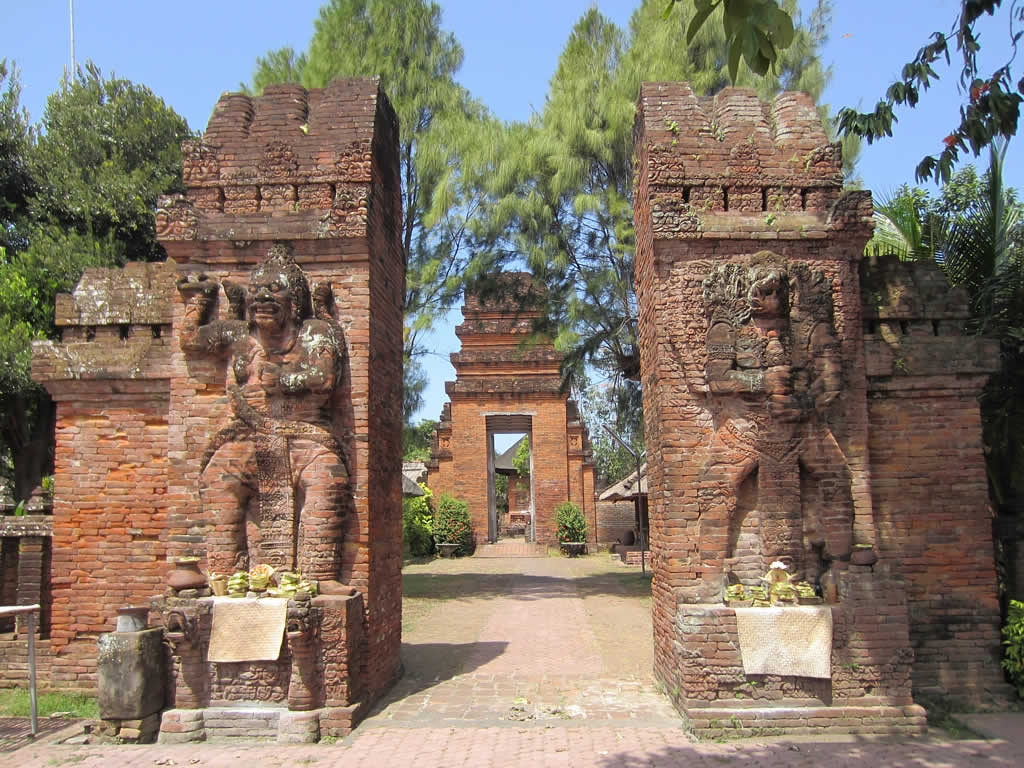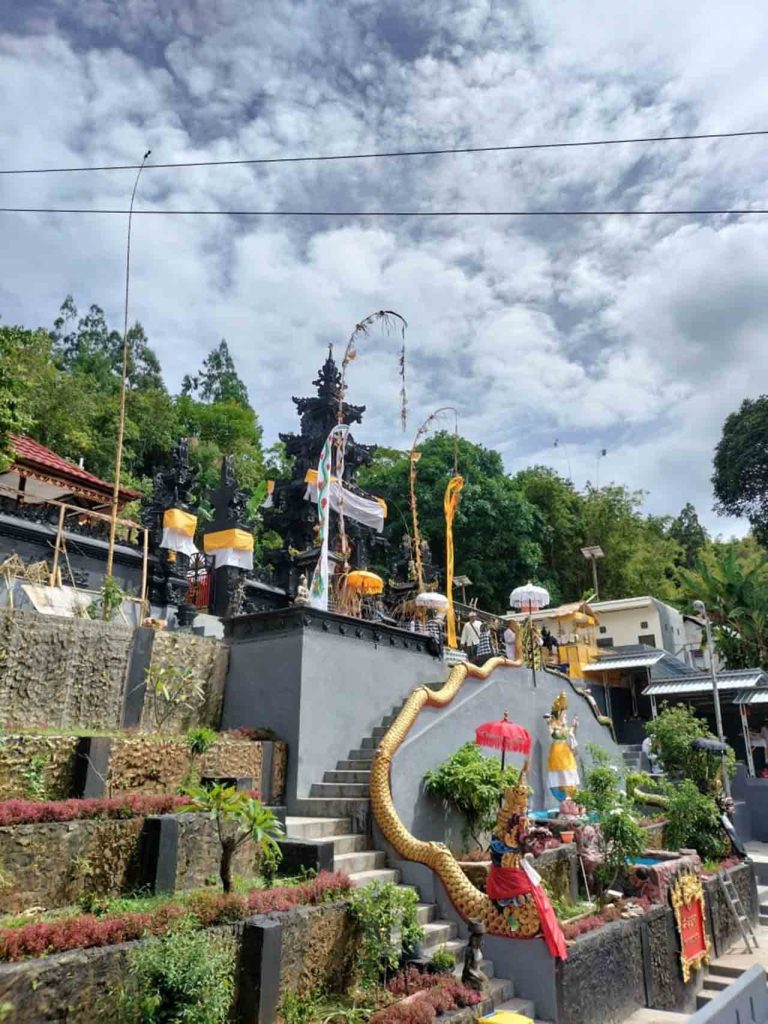Pura Maospahit Denpasar, also known as Pura Maospahit Tonja, is a historical temple in Bali that dates back to the 14th-15th century. As part of the Majapahit Kingdom’s influence, this temple stands as a testament to the empire’s vast reach across the Indonesian archipelago. Many historical sites and artifacts from Majapahit can still be found throughout the region, and Pura Maospahit is among the most significant ones in Bali.
One of the remarkable aspects of Pura Maospahit is its architectural style, which closely resembles East Javanese temples. Its entrance features a distinctive split-gate design, a characteristic element found in many Majapahit-era structures. Additionally, guardian statues at the temple’s gate serve as a symbolic welcome to visitors.
Covering an area of approximately one hectare, Pura Maospahit originally had three sacred zones known as Tri Suci Mandala. However, in 1475 Saka (Gregorian equivalent: 1553 AD), the temple underwent an expansion by the Majapahit rulers, adding a fourth sacred area (mandala).
Historically, this temple is linked to Patih Kebo Iwa, a renowned figure from the Bali Kingdom. Ancient inscriptions found within the temple highlight his birth and legendary strength, which was known even beyond Bali. Patih Kebo Iwa was feared by Majapahit’s military leader, Patih Gajah Mada. In addition to being a powerful warrior, he was also a master in undagi, the traditional Balinese architectural art.
The temple’s origins trace back to the year 1200 Saka (1278 AD). Initially, it was a modest shrine, but as the Majapahit Kingdom extended its control over Bali, Gajah Mada ordered its expansion. This was done as a tribute to Kebo Iwa, recognizing his formidable presence and contributions to Balinese history.
Pura Maospahit is located in Banjar Tatasan Kelod, Tonja Village, North Denpasar, Bali, along Jalan Dr. Sutomo. It is conveniently accessible, requiring only a 15-minute drive from Ngurah Rai International Airport. Given its historical significance, this site is a must-visit for those interested in Bali’s rich past.
For travelers using public transportation, the closest stop is Denpasar North Bus Terminal. From there, visitors can take a motorcycle taxi (ojek) to reach Tonja Village. Exploring Pura Maospahit is not just a cultural experience but also an educational journey, making it an ideal destination for families with children.
Upon entering the temple grounds, visitors will find three main sections featuring terracotta statues, pregina terracotta sculptures, and various ancient reliefs, including depictions of Garuda and Bima. The temple is also home to priceless relics from prehistoric times, such as stone altars, ritual platforms (prasada), and sacred bathing stones (batu pesiraman). These artistic and historical elements reflect the influence of East Javanese temple designs.
Apart from showcasing artifacts from the Majapahit era, Pura Maospahit remains an active spiritual site. Traditional Balinese ceremonies are still held here, preserving centuries-old cultural practices. Visitors may even have the opportunity to witness sacred dances and ritual performances, adding to the temple’s mystical charm.
To enhance the visitor experience, Pura Maospahit provides various facilities, including prayer areas, rest zones, clean restrooms, and ample parking space. Nearby, a selection of accommodations is available, ranging from budget-friendly stays to luxurious hotels.
When visiting, it is essential to respect the sanctity of the temple. Maintaining cleanliness, refraining from touching or damaging historical artifacts, and following temple etiquette are strongly encouraged. Lastly, don’t forget to capture the beauty of Pura Maospahit through photography, ensuring a memorable experience of this ancient Balinese landmark. (BT)





